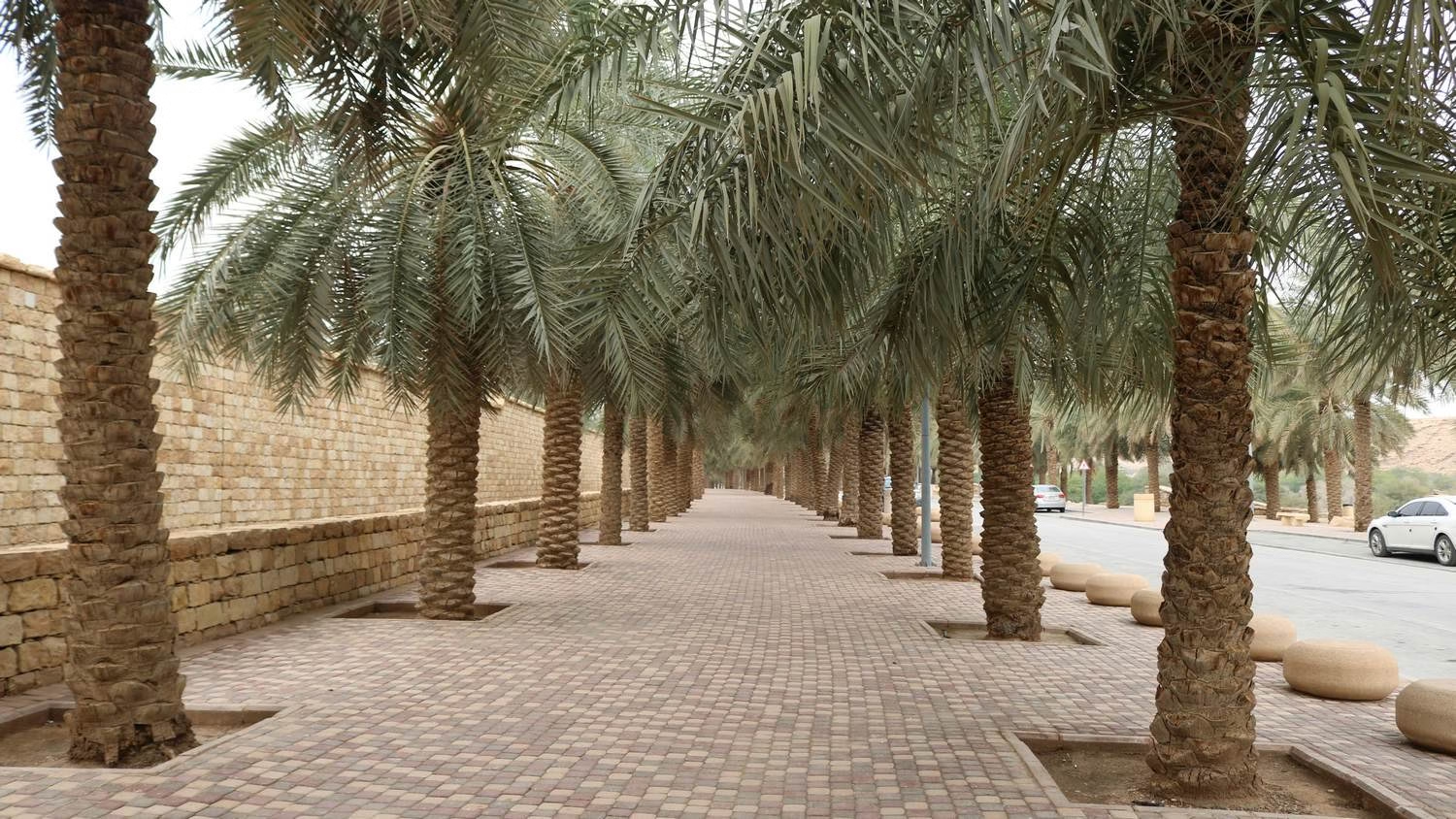Find WordPress hosts that fully support Arabic content, RTL themes, and Saudi compliance.
Table of Contents
Introduction — WordPress Hosting with Arabic Support
You need WordPress hosting with Arabic support if your readers use Arabic. This is key for Right-to-Left (RTL) layouts. You might need Arabic tools and help in Arabic too.
This guide covers all you need. It talks about server places, character sets, and how themes and plugins work with Arabic. It also covers Arabic SEO, making sites easy to use, and rules for Saudi users. Plus, it gives steps to set up your site now.
Read this to pick a host that supports Arabic content well. Your site will be fast, safe, and good for SEO. Read our full Top 10 Cloud Hosting Guide with comparison.
Why Arabic Support in WordPress Hosting Matters
- User experience relies on language: Arabic users want RTL text that looks right. They like interfaces that go from right to left. If text is messy or layouts are wrong, they might not trust your site or buy from you.
- Admin and support in Arabic helps: If you or your team use Arabic, a host with Arabic panels or Arabic speaking support saves time and cuts mistakes.
- SEO is different for Arabic: Arabic search habits and words are not like English. Hosting that supports good URL encoding and server settings helps search engines find your Arabic pages.
- Rules and laws matter: For Saudi and Gulf users, data storage and local taxes can be important. Picking a host that knows local rules lowers risks.
- Speed is key: To make pages load fast for Gulf users, choose servers or CDNs that focus on the Middle East.
Core Technical Needs for Arabic WordPress Hosting
1. Character Encoding and Internationalization
- Use UTF-8 everywhere: in the database, HTML, HTTP headers, and PHP. This stops broken Arabic text and lost data.
- Set MySQL or MariaDB to utf8mb4_unicode_ci or similar for sorting.
- Make sure backups keep the encoding.
2. Server Locale and Timezone
- Let PHP use ar_SA for dates, times, and numbers.
- Support setting WordPress to Arabic and have fallbacks for mixed language sites.
3. Right-to-Left (RTL) Rendering
- Themes and page builders must have RTL styles or auto mirroring.
- Server caching must not break RTL CSS order.
- Critical CSS tools must make RTL versions for correct first views.
4. Fonts and Webfont Support
- Host must allow easy use of Arabic webfonts like Woff2. Common fonts: Noto Naskh Arabic, Cairo, Almarai.
- CDN or font hosting must deliver Arabic fonts fast and without issues.
5. URL and Slug Handling
- Support Arabic links and correct URL encoding.
- Keep slugs readable or offer auto transliteration.
6. Back-End Translations and UX
- WordPress admin must be fully in Arabic. Host should not block language downloads.
- One-click installs should let you pick Arabic during setup.
7. Search and Indexing
- Host should work with Arabic search plugins and tools.
- Support HTTP/2 or HTTP/3 and compression for faster Arabic pages.
Hosting Features to Look For for Arabic WordPress Sites
- Server places and CDN: Choose hosts with data centers near Saudi Arabia like Riyadh or Dubai. Or use CDNs with Middle East points to reduce delay.
- Arabic speaking support: 24/7 help in Arabic for problems, moves, and fixes.
- RTL-safe caching: Cache systems like Varnish or LiteSpeed that don’t break RTL styles.
- One-click Arabic WordPress installs: Auto pick Arabic and RTL themes during setup.
- Staging sites: Make test sites in Arabic to check RTL, fonts, and SEO safely.
- Automatic backups with encoding kept: Daily backups that save UTF-8 and let you restore Arabic content quick.
- Safety and rules: WAF that knows Arabic traffic, DDoS protection, and options for local data storage.
- Developer tools: SSH, WP-CLI, Git, and database access with safe UTF-8 moves.
- Performance stack: PHP 8.x, MariaDB 10.x, HTTP/2/3, Brotli, and CDN caching for Arabic pages.
- Email sending: Proper setup for Arabic emails to avoid spam filters.
Picking the Right Host: A Simple Checklist
Use this list when looking at hosts for Arabic WordPress:
- Servers or CDNs near the Gulf region.
- UTF-8 as default in database and server.
- Arabic control panel or support available.
- Auto WordPress installs with Arabic choice.
- RTL-ready themes and works with page builders.
- Caching that keeps RTL styles.
- Easy font hosting for Arabic webfonts and WOFF2.
- Staging that keeps language when moving to live.
- Daily backups that save encoding.
- Arabic support for SEO tools and sitemaps.
- WAF, DDoS protection, and data options for GCC rules.
- Clear move process with no downtime.
- Price that fits your growth and scales with you.
How Arabic Content Affects Speed and SEO — Best Tips
Arabic Page Speed Tips
- Serve Arabic fonts via a fast CDN. Use smaller font files if you can.
- Use server and edge caching for Arabic pages. Set cache keys for language types.
- Avoid inline CSS that doubles size. Use compiled RTL stylesheets.
- Delay non-critical JavaScript. Make sure critical CSS has RTL styles for first paint.
Arabic SEO Best Practices
- Use hreflang tags for Arabic types like ar, ar-SA, ar-EG.
- Make clean Arabic slugs. If you change them, set canonicals right.
- Write meta titles and descriptions in good Arabic grammar with right keywords.
- Use structured data with Arabic text fields. Ensure proper encoding.
- For social sharing, use both Arabic and Latin metadata.
- Set on-site search to handle Arabic stopwords and tokenization well.
Accessibility, UX, and Typography for Arabic Sites
- Set directional attributes: on Arabic pages.
- Keyboard navigation should follow right-to-left order.
- Form fields, labels, and messages should be in Arabic for better UX.
- Use slightly larger line height for Arabic text than Latin for easy reading.
- Don’t mirror images with text inside. Use localized images instead.
- Design navigation that feels natural in RTL. Test with users to see where the logo should be.
Safety and Legal Points for Saudi and Gulf Users
- Data storage: If your users are in Saudi Arabia and content is sensitive, use local data centers or verified options.
- Local rules: Check laws on content, e-commerce, and payments. SAMA rules may apply for money services.
- Arabic help in incidents: Your host’s team should speak Arabic for quick fixes.
- PCI and payments: Ensure WooCommerce handles Arabic locales and money well. Host should allow SSL and HTTPS best practices.
- Backups and retention: Keep multiple backups and test restores for Arabic sites to avoid encoding issues.
Suggested Technical Stack and Settings
- PHP 8.1+ with OPcache on.
- MariaDB or MySQL 10.x with default charset utf8mb4 and collation utf8mb4_unicode_ci.
- HTTP/2 or HTTP/3 + Brotli compression.
- Redis or Memcached for object caching. Varnish or LiteSpeed for full-page caching if it works with RTL CSS.
- CDN with Middle East points and cache rules by path and language.
- WP-CLI and SSH access for scripted moves and database checks.
- Use staging and Git for theme/plugin updates. Push Arabic translations and fonts with deployments.
- Monitoring that checks Arabic locale requests.
You might need to read this too: Best Cloud Hosting Providers in Saudi Arabia
Step-by-Step: Set Up a WordPress Site with Full Arabic and RTL Support
- Pick a hosting plan:
- Choose a host with Middle East points or strong CDN. Confirm utf8mb4 support.
- Check Arabic support channels and move process.
- Deploy WordPress:
- Use one-click install or manual. Pick Arabic as site language during setup.
- Set in your theme header for Arabic pages.
- Database settings:
- Ensure database collation is utf8mb4_unicode_ci.
- Run checks with WP-CLI to confirm.
- Choose an RTL-ready theme:
- Pick themes that say RTL support or have style-rtl.css.
- Test all templates for layout issues like navigation and widgets.
- Install key plugins:
- Caching plugin that respects RTL like LiteSpeed Cache or WP Rocket.
- Arabic SEO tools or set Yoast/Rank Math for Arabic meta tags and hreflang.
- Font loader plugin or add Arabic webfonts via theme. Serve via CDN.
- Security plugin with WAF and Arabic alerts if possible.
- Fonts and typography:
- Load WOFF2 Arabic fonts from CDN. Preload key fonts.
- Set font stacks in CSS like “Almarai”, “Tajawal”, “Noto Sans Arabic”.
- Arabic content and translations:
- Use WP language packs for admin screens.
- For multi-language sites, use WPML, Polylang, or Weglot. Set hreflang tags right.
- Staging and testing:
- Use staging to check RTL layout, Arabic search, slugs, and structured data.
- Test on devices and browsers common in Saudi Arabia.
- Optimize and launch:
- Set CDN caching rules for language types.
- Run Lighthouse and PageSpeed tests from Middle East places.
- Submit sitemap to Google Search Console. Set target country if needed.
- Watch and improve:
- Use uptime monitors that check Arabic pages.
- Track search keywords and ranks for Arabic queries.
Move Tips: Moving an Arabic WordPress Site Safely
- Export and import database with mysqldump using –default-character-set=utf8mb4 to save Arabic text.
- Avoid find/replace on serialized data unless using tools like WP-CLI that handle it.
- Move fonts and media with care. Check that file names work on servers with different locales.
- Test links after moving. Fix encoding issues if Arabic slugs look wrong.
- Keep old site live until DNS is done and you check encoding and layout.
Testing Checklist Before Going Live
- [ ] Site language meta tags: checked.
- [ ] Database charset and collation: utf8mb4 checked.
- [ ] Arabic fonts load well and are preloaded.
- [ ] RTL CSS works on all templates.
- [ ] Arabic admin language packs installed.
- [ ] Hreflang and canonical tags set for Arabic pages.
- [ ] Sitemap has Arabic URLs and is sent to search engines.
- [ ] PageSpeed tested from a Middle East point and made faster.
- [ ] CDN set with Middle East edge nodes.
- [ ] Email sending tested for Arabic content.
- [ ] Backups are auto and restore tested.
- [ ] Staging to live move steps written down.
Real Host Pick Examples and Ideas
- If you need full Arabic support, local data centers, and Arabic speaking help, choose a provider with KSA/UAE points or a local reseller with in-region hosting and CDN.
- If you like cloud flexibility plus Arabic support, a managed cloud panel on AWS/GCP/DigitalOcean is good. It offers regional servers and managed features like auto backups, staging, and cache while allowing Arabic WordPress installs.
- For growth and e-commerce in Arabic, pick hosts with staging, object caching, and scalable cloud resources.
Note: For more on regional hosting and a comparison for Saudi users, see my full review on WordPress hosting in Saudi Arabia. It gives hands-on tips for Arabic sites: Check this link for more details.
Common Mistakes and How to Avoid Them
- Broken text after moving: Fix by reimporting the database with right character set and collation (utf8mb4).
- Mirrored images with Arabic text: Use localized images instead of mirroring ones with text.
- Fonts not loading in some browsers: Check MIME types and CORS headers on CDNs.
- SEO issues between language types: Use hreflang and canonical tags right. Make sure each Arabic page has unique content.
- Cache breaking RTL CSS: Keep critical RTL styles out of heavy minification. Test caching on staging.
Care Plan for Arabic WordPress Sites
- Each week: Update plugins and themes on staging. Test RTL rendering.
- Each day: Auto backups and quick check of home and key pages.
- Each month: Review Arabic SEO keywords, hreflang, and schema.
- Each quarter: Retest speed from Middle East places. Check font optimization and test backup restore.
- On big WP updates: Run full staging tests to check text rendering and admin translations.
Conclusion — WordPress Hosting with Arabic Support
Picking WordPress hosting with Arabic support means more than an Arabic panel. It needs a full system that saves character encoding, shows RTL styles right, offers Arabic fonts, gives regional speed, and provides Arabic help when you need it.
Follow the checklist and steps above to start a strong Arabic WordPress site. It will work well in Saudi Arabia and across the Arabic-speaking world.
For a deeper look and tips for Saudi users, see my full guide on WordPress hosting in Saudi Arabia. It adds to this setup and gives host ideas for the region: Find more here.















